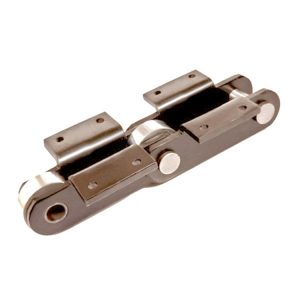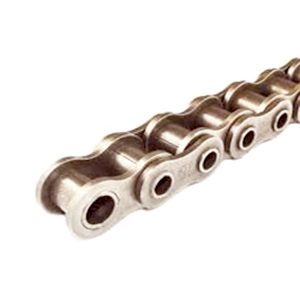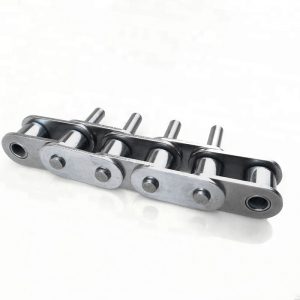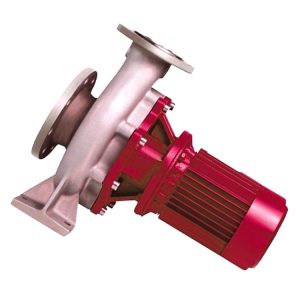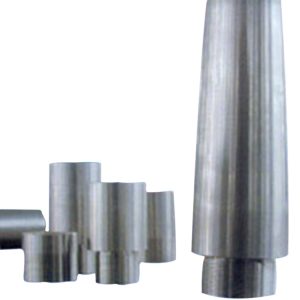Product Description
CUSTOMIZED CONVEYOR ROLLER (conveyor pulley,gravity roller/ power roller/ driven roller pulley)
DMC Roller supply different conveyor rollers including gravity roller, drive roller,drive pulley, Polyurethane (PU) covered roller, Buna Nitrile rubber(NBR) covered roller, Styrene Butadiene Rubber (SBR) covered roller, CHINAMFG rubber coating roller , Silicon rubber, NR and CR etc
The conveyor rollers are used in a variety of industries including food distribution, pharmacy,tobacco,clothing,postal express,logistic and distribution,rubber and airport industries.
We could process conveyor roller up to 6,000mm in-house and max. 12,000mm long by outsourcing. All of customized conevyor rollers are available, and we could also meet some special requirements for friction and anti-static performance, etc. In addition, we provide inspection report for every critical conveyor roller.
Description:
|
Production type |
custom OEM,ODM production conveyor (system), chain conveyor |
|||
|
Roller Materail |
SAE1571, 1045, S355J2H, Q345B, 38CrNiMo, 40Cr, Stainless steel 304L/316L and aluminum 6063&6061T651, etc. baggage handling system heavy steel rolls; quality rolls |
|||
|
Types |
idler roller, drive roller, chain roller ,tapered roller,free roller, all of Logistics equipment roller for mine conveyor |
|||
|
Shapes |
flat roll, cambered or crowned roller pulley, anilox roll |
|||
|
Standards |
customized, CEMA, TD-2, JIS, ISO small rollers steel rolls manufacturing |
|||
|
Surface Coating |
paint, powder coating, zinc plating, rubber coated solid steel rolls cylinder for machine |
|||
|
Supply Capacity |
>10,000pcs monthly complex roller logistics equipment, conveyor (system), chain conveyor |
|||
|
Assembly Service |
Available conveyor idler trough roller precision grooved roller /grooving roller |
|||
|
Application Fields |
logistics equipment, belt conveyor systems, automotive, parcel & baggage handling system, ecommerce , warehouse & distribution conveyor solution, converting machine, mine conveyor, food industry, wood processing, etc. |
|||
|
Package |
plywood box (Fumigation-free) Well-designed packaging is also very important for the qualified conveyor rollers, otherwise the conveyor pulley may be damaged in the loading/unloading process and transportation. roller |
|||
|
Also Named as |
conveyor idler, idler conveyor roller, conveyor belt roller, carrying idler, rubber idler roller, conveyor idler roller, idler pulley, rubber conveyor pulley, drum pulley, belt drive pulley, drum roller, crowned pulley, transport roller, carrier roller, conveying roller, conveyor tail pulley, belt conveyor head pulley, rubber lagging drum pulley, impact roller, etc. |
|||
|
Other Products |
industrial steel roller, rubber coated roller, aluminum cylinder, machined components, welding, sheet metal fabrication |
|||
QUALITY CONTROL
* Accept SGS and any other third party’s in-site inspection if necessary.
* Provide inspection report for each CTQ and critical part before delivery.
* Confirm the DFM with customer before sample production.
* Provide 8D report and CAR to client in case quality issue happens.
* Have regular maintenance schedule for all measuring tools.
* Strict controls and checkups are conducted on a regular basis.
* In addition, our concerning is not only part itself but also material localization, documentation of production and reasonable design of packaging for long distance transportation.
INSPECTIONS
Quality runs through the whole process from material to delivery.
We provide inspection report for each roller before shipment. The below sample reports are for your reference.
/* January 22, 2571 19:08:37 */!function(){function s(e,r){var a,o={};try{e&&e.split(“,”).forEach(function(e,t){e&&(a=e.match(/(.*?):(.*)$/))&&1
| Material: | Carbon Steel |
|---|---|
| Surface Treatment: | Electroplating |
| Motor Type: | Frequency Control Motor |
| Installation: | Horizontal |
| Size: | Customer-Made |
| Transport Package: | Wooden Crate |
| Customization: |
Available
| Customized Request |
|---|
What are the applications of pulleys in the automotive industry?
Pulleys have various applications in the automotive industry, contributing to the operation of different systems within vehicles. Here are some common applications of pulleys in the automotive industry:
1. Engine Systems: Pulleys are extensively used in the engine systems of vehicles. The crankshaft pulley, also known as the harmonic balancer, is connected to the engine crankshaft and drives various engine accessories through the use of belts. These accessories may include the alternator, power steering pump, water pump, air conditioning compressor, and more. The rotation of the crankshaft pulley powers these accessories, allowing them to perform their respective functions.
2. Serpentine Belt Systems: Modern vehicles often use a serpentine belt system, which is a single, long belt that drives multiple engine accessories simultaneously. The serpentine belt travels around various pulleys, including the crankshaft pulley, tensioner pulley, idler pulleys, and accessory pulleys. These pulleys guide and maintain the tension of the serpentine belt, ensuring efficient power transfer to the engine accessories.
3. Timing Belt/Chain Systems: Timing belts or chains are used in internal combustion engines to synchronize the opening and closing of engine valves with the movement of the pistons. Pulleys known as timing belt pulleys or timing sprockets are mounted on the camshafts and crankshafts, and they work together with the timing belt or chain to ensure precise valve timing. These pulleys play a crucial role in maintaining engine performance and preventing valve interference.
4. Supercharger/Blower Systems: Pulleys are integral components in supercharger or blower systems used in performance vehicles. These systems compress the incoming air to increase engine power and performance. The pulley on the supercharger or blower is driven by the engine crankshaft pulley through a belt or a drive system. By changing the size of the pulley, the speed and boost level of the supercharger or blower can be adjusted.
5. Tensioners and Idler Pulleys: Tensioners and idler pulleys are crucial in maintaining proper belt tension and alignment in automotive systems. Tensioner pulleys are designed to apply tension to belts, ensuring they remain properly seated on the pulleys throughout their operation. Idler pulleys guide the belt and help maintain its alignment. These pulleys contribute to the smooth and reliable operation of various belt-driven systems, reducing slippage and preventing premature belt wear.
6. Accessories and Auxiliary Systems: Pulleys are also employed in various auxiliary systems and accessories in vehicles. These may include systems such as power windows, windshield wipers, cooling fans, and more. Pulleys in these systems facilitate the transfer of rotational motion from motors to mechanical components, enabling the desired functionality.
Overall, pulleys play significant roles in the automotive industry by driving engine accessories, maintaining belt tension, synchronizing engine timing, enhancing performance, and supporting various auxiliary systems. Their proper functioning is crucial for the reliable and efficient operation of automotive systems and components.
How are pulleys used in manufacturing processes and assembly lines?
Pulleys play a crucial role in manufacturing processes and assembly lines, facilitating the movement of materials, components, and products. They are utilized in various ways to enhance efficiency, increase productivity, and streamline production. Here’s how pulleys are commonly used in manufacturing processes and assembly lines:
1. Conveyor Systems:
Pulleys are extensively employed in conveyor systems, which are integral to manufacturing and assembly lines. Conveyor belts or chains run over pulleys at different points along the line, transporting materials or products from one workstation to another. The pulleys help guide and support the conveyor belts or chains, ensuring smooth and controlled movement. By utilizing pulleys of different sizes or configurations, conveyor systems can be designed to accommodate various layouts, inclines, or speed requirements.
2. Material Handling:
Pulleys are used to facilitate the lifting, lowering, and movement of materials in manufacturing processes. Cranes, hoists, and lifting equipment often incorporate pulley systems to provide mechanical advantage and precise control over heavy loads. The pulleys, along with ropes, cables, or chains, allow operators to lift and position materials with minimal effort and improved safety.
3. Assembly Line Automation:
In automated manufacturing and assembly lines, pulleys are utilized in robotic systems to control the movement of robotic arms. The pulleys are incorporated into the mechanism that guides the cables or belts connected to the robotic arms. By adjusting the position and tension of the pulleys, precise and coordinated movements can be achieved, enabling efficient assembly processes.
4. Tensioning and Alignment:
Pulleys are crucial for maintaining proper tension and alignment in manufacturing processes. Tensioning pulleys are used to apply the appropriate tension to belts or chains, ensuring optimal power transmission and preventing slack or slipping. Alignment pulleys are employed to align belts or chains, minimizing wear, reducing vibrations, and prolonging the life of the components.
5. Power Transmission:
Pulleys are central to power transmission in manufacturing processes and assembly lines. They are used in conjunction with belts, chains, or gears to transfer rotational motion and power from one component to another. By selecting pulleys of different sizes or ratios, the speed and torque can be adjusted to suit specific production requirements.
6. Tool and Machine Positioning:
In manufacturing processes, pulleys are often integrated into tool positioning systems or adjustable machine setups. By using pulleys and cables, tools or machine components can be easily repositioned, allowing for quick changeovers or adjustments to accommodate different workpieces or production tasks.
Overall, pulleys are indispensable in manufacturing processes and assembly lines, enabling efficient material handling, precise movement control, proper tensioning and alignment, power transmission, and flexible tool positioning. Their use contributes to increased productivity, improved workflow, and enhanced automation in the manufacturing industry.
How do pulleys contribute to load distribution and lifting?
Pulleys play a crucial role in load distribution and lifting by providing mechanical advantage and distributing the load over multiple segments of rope or belt. Here’s how pulleys contribute to load distribution and lifting:
1. Mechanical Advantage: Pulleys provide mechanical advantage, which allows for the multiplication of the force applied to the rope or belt. When a force is applied to one end of the rope or belt, it creates tension that causes the pulley to rotate. As the pulley turns, the force is transmitted to the load attached to the other end of the rope or belt. By distributing the load over multiple pulleys, the force required to lift the load is reduced, making it easier to lift heavier objects.
2. Load Sharing: Pulleys enable load sharing among multiple segments of the rope or belt. In systems with multiple pulleys, such as block and tackle arrangements, the load is distributed over several segments of rope or belt. Each segment carries a fraction of the load, reducing the strain on each individual segment. Load sharing ensures that the load is evenly distributed, minimizing the risk of overload or failure in any single segment.
3. Directional Change: Pulleys allow for directional change in the force applied to the load. By redirecting the force along a different path, pulleys enable lifting and moving loads in various directions, including vertically, horizontally, or at an angle. This directional change is particularly useful in situations where the force needs to be applied from a different position or angle than the original force application.
4. Balance and Stability: Pulleys contribute to load distribution and lifting by providing balance and stability. The use of multiple pulleys in a system helps to distribute the load evenly, preventing excessive stress on any single point. This balanced distribution of the load enhances stability and reduces the risk of tipping or imbalance during lifting operations.
5. Control and Precision: Pulleys provide control and precision in load distribution and lifting. By adjusting the tension in the rope or belt, operators can achieve precise positioning and movement of the load. This level of control allows for accurate placement of heavy objects and ensures smooth and controlled lifting operations.
6. Increased Lifting Capacity: By leveraging mechanical advantage and load distribution, pulleys increase the lifting capacity. The mechanical advantage gained through the use of pulleys allows for the lifting of heavier loads with less effort. The load is distributed over multiple segments of rope or belt, reducing the force required to lift the load and enabling the lifting of objects that would otherwise be too heavy to lift manually.
Overall, pulleys contribute to load distribution and lifting by providing mechanical advantage, load sharing, directional change, balance and stability, control and precision, and increased lifting capacity. These contributions make pulleys an essential component in various lifting and load handling applications.
editor by CX
2024-04-16











